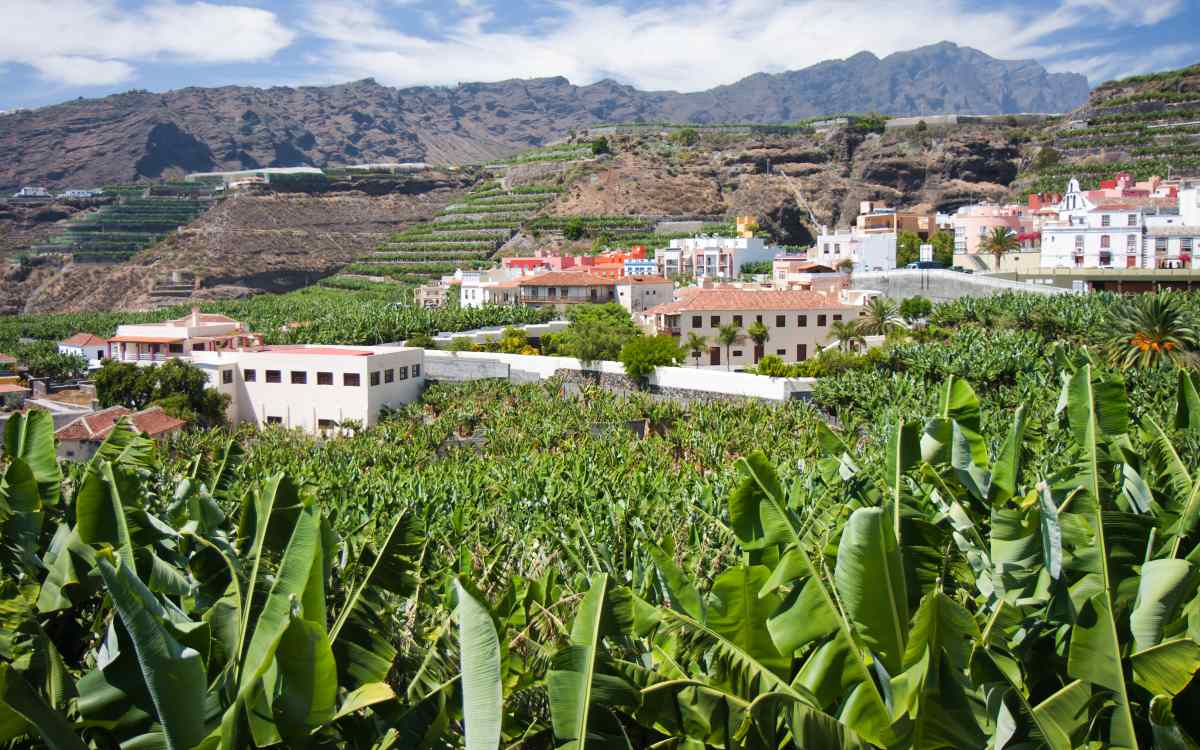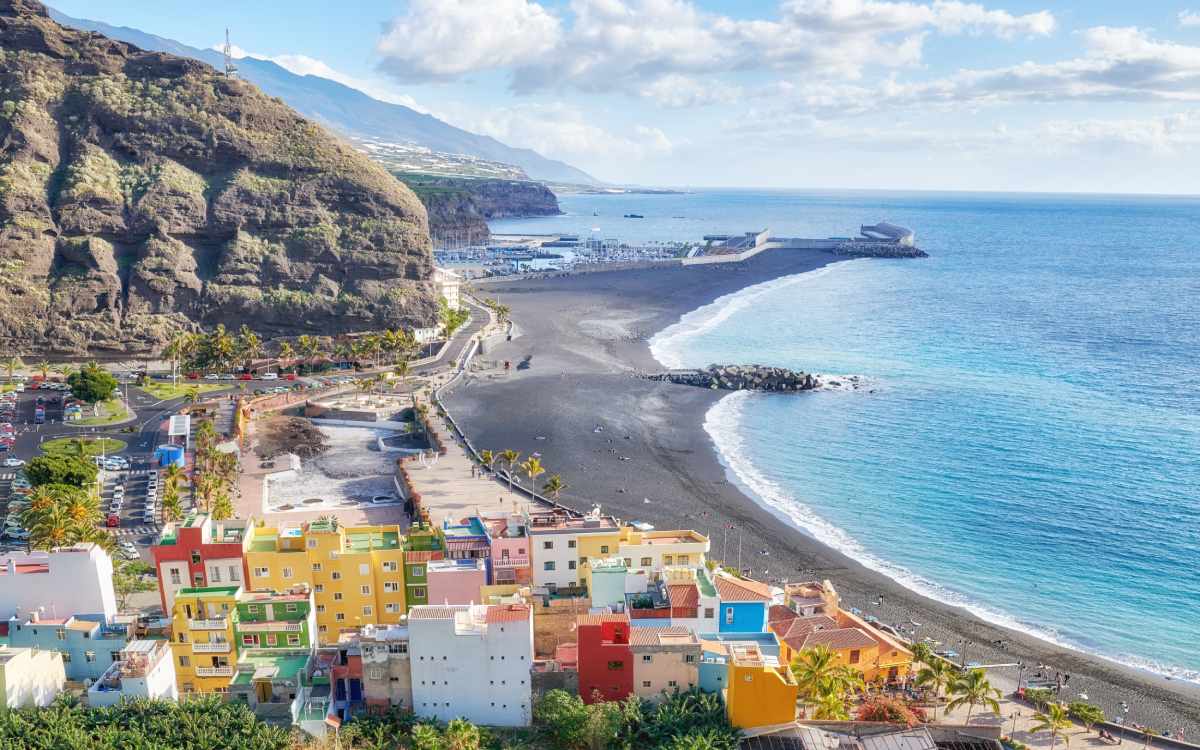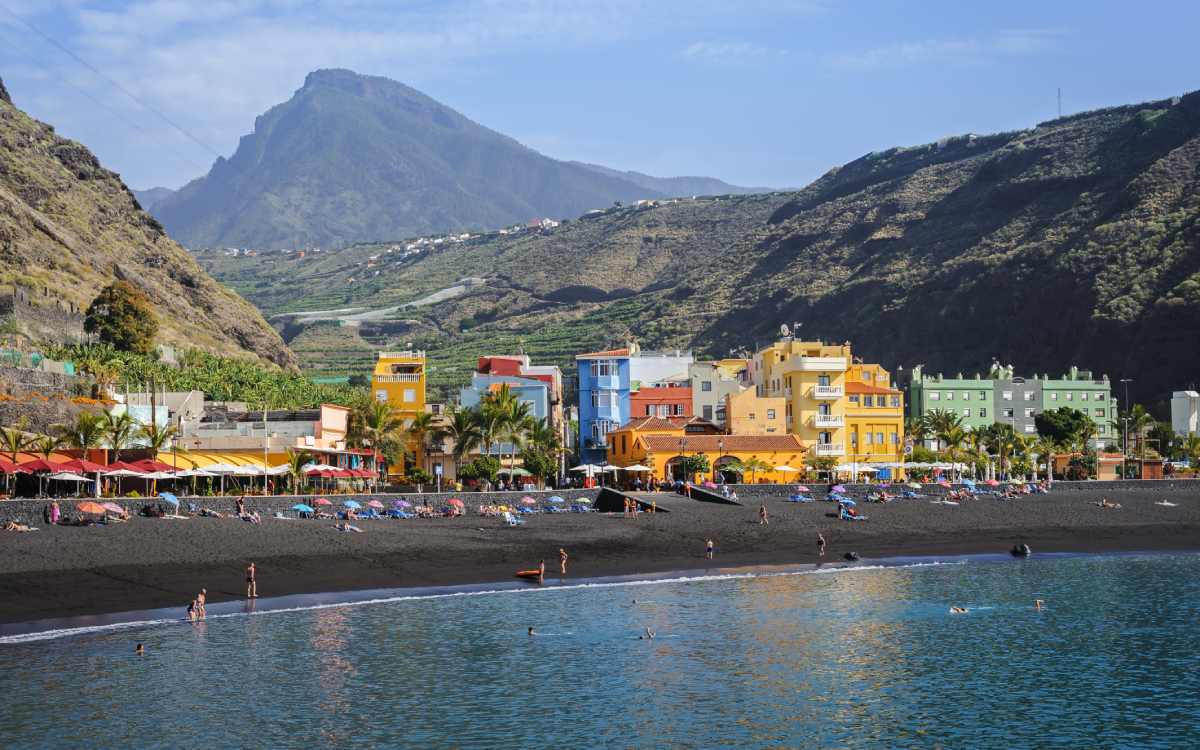
On the west coast of La Palma, in Islas Canarias, a village lies on a plain surrounded by the Atlantic Ocean and a sea of banana plants. Its vibrant, tiny houses shine brightly on a black sand beach. For this reason, this is one of the most beautiful villages in La Palma. The last thing you would expect is what actually happened here in the 20th century: a declaration of independence, not only from the municipality or the islands, but from Spain as well. But how did this happen?

Banana plantation in Tazacorte. | Shutterstock
Interestingly enough, La Palma’s conquest began in the area where the current Puerto de Tazacorte sits now, in the mouth of the Las Angustias cliff. It was 1942. A camp and a hermitage were placed here. The later was built in honour of Saint Michael the Archangel, who remains the patron saint of this place. Some time later, the land was bought by a Flemish pioneer who used it for the cultivation of sugar cane. People who worked these lands did it under conditions similar to those of medieval servants. By the end of the 18th century, the land was no longer useful due to soil depletion, and they could only eat fern roots.
In the 19th century, Tazacorte became part of the recently created municipality of Los Llanos de Aridane. The declining cultivation of sugar cane was replaced with other activities, such as fishing or woodlouse breeding. Tomatoes, tobacco, and bananas were cultivated as well. This all turned the place into one of the most thriving villages in the island. Tazacorte begins to grow economically, politically, and culturally, earning its name of ‘the little Paris.’ But there was a problem: the village was still subjected to the despotism of the Sotomayor family from Los Llanos, which had always prevented the town’s development. For this reason, Tazacorte’s people, known as bagañetes, began fighting to have their own voice.

Tazacorte. | Shutterstock
After years of struggling for independence, Tazacorte was granted the title of city by the King Alfonso XIII. This event was extremely celebrated. Music and fireworks filled the streets. But those who didn’t agree with this independence were powerful, and they probably did something behind the scenes: a few days later, the government rectified its decision by explaining that the destinatary of the title was Tacoronte, in Tenerife, instead of Tazacorte.
This correction provoked deep anger, which would lead to the next events. In 1925, Tazacorte’s people, tired of being mistreated and controlled by the antiquated family of Sotomayor, declared their independence from Los Llanos and Spain. In fact, it is said that many men guarded the ‘borders’ with hunting rifles so that no foreigner would step into Tazacorte.
This strange independence from the kingdom lasted barely three days. The authorities took it seriously and sent a warship to this corner of La Palma, which pretended more than dissuading the people: a howitzer was fired at Tazacorte but actually landed on its neighbour village, Argual. Tazacorte’s people were dissuaded then, giving up their self-proclaimed independence and declaring themselves Spanish again. However, Tazacorte won something in this story: it became independent from Los Llanos de Aridane, turning into a different municipality.

Tazacorte’s beach. | Shutterstock
Nowadays, Tazacorte is one of the most enchanting towns in La Palma, thanks to the colourful houses on its lowest part and the noble houses on its upper area, which date back to the 16th century. The locality faced a critical situation when a volcano erupted, provoking the isolation of around 60% of its territory that was buried in the lava. Tazacorte’s people are still recovering from this tragedy, and the charm of its beaches and its colours remains alive. Its beachy sands are black, a colour that actually expands throughout the whole village, under a luscious layer of green vegetation.
If you would like to understand more about life in Tazacorte, you should visit the Museo del Plátano (which literally means ‘Banana Museum’). Bananas played an important role in the development of this village and represent Canarias’ identity. Museo Casa Dr. Morales and Casa Massieu are museums you can visit too. The later allows you to travel back in time and watch the past life of Tazacorte thanks to its old furniture and decorations.
Another traditional product that has its own space is mojo; there is a museum where you can learn how it’s usually prepared. Gastronomy is, without a doubt, one of the main attractions of this place. Fish, polines (boiled green bananas), and other traditional Canarian products such as mojo queso and papas arrugadas are an essential part of its gastronomy.
Nature lovers will be charmed by the path networks that connect with the rest of the island. Adventurers will have to walk through banana trees to find breathtaking and high viewpoints. Nature is extremely well preserved and allows you to watch tabaibas, a native plant species, and birds, such as falcons and wild canaries. Scuba diving is a popular activity too, a fabulous activity due to the rich marine fauna of the area. Whale-watching is gaining popularity because Tazacorte is one of the best places to do it.